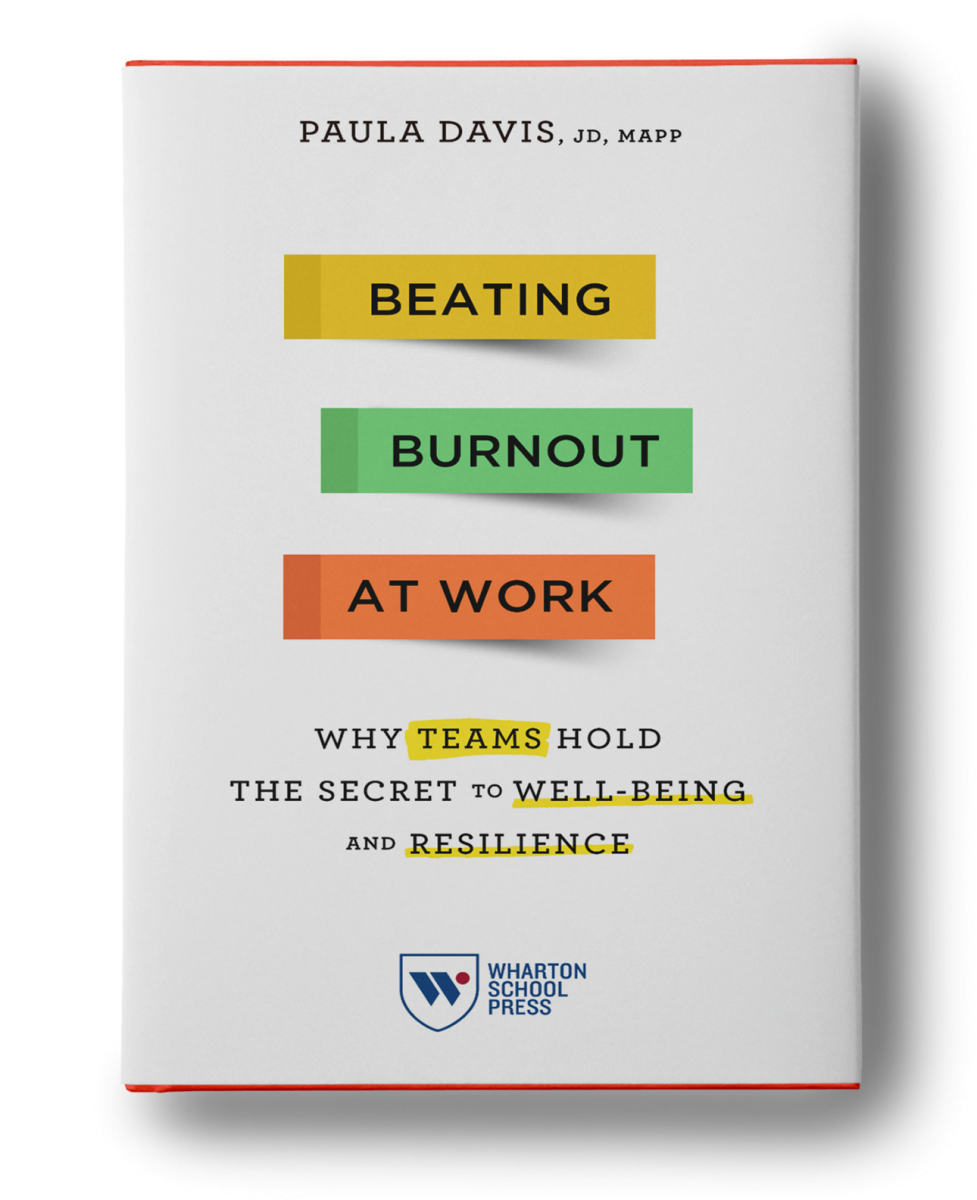I practiced law for seven years and worked in both a large law firm and a busy corporate legal department. The legal profession runs on the belief that clients come first in all circumstances, and that in order to be a good lawyer, you must display an unwavering dedication to that tenet. Many other professions also require this “always on” and “always available” mentality and reward those who meet what has come to be called the “ideal worker” standard. Ideal workers are people who are totally dedicated to their jobs and always on call. They must continue to choose to prioritize their jobs ahead of other parts of their lives, their personal needs, and even their health.
The problem is that it becomes difficult for many people to sustain this type of all-or-nothing view of work, and it can lead to a lot of stress and burnout. Professors Erin Reid and Lakshmi Ramarajan have interviewed hundreds of professionals in a variety of industries, asking whether this superhuman devotion to work is in fact even necessary for organizational success. They found that workers tend to deploy one of three strategies in order to survive a high-intensity workplace:
STRATEGY 1: Accept and conform to the demands. Many professionals don’t see much of a choice and simply elect to accept and conform to the demands of their high-intensity workplace. In one study, Reid and Ramarajan found that 43% of the people they interviewed used this strategy. The ideal worker culture is promoted as your ticket to success, yet it’s a Catch 22 in disguise – conform and accept the missed date nights, cancelled plans, all hours emails, less time with family and friends or openly share the other aspects of your life and get labeled as not serious, not a “go-getter,” or not someone who can be counted on to handle the tough deals.
Not only is burnout a potential reality for those who accept and conform, as conformers advance in their career, they internalize the ideal worker mentality and can start to judge people who don’t follow suit. In addition, conforming can lead to a lot of regret if it’s not adopted intentionally and examined regularly. I have coached both men and women who have expressed profound sorrow at not pursuing romantic relationships, deciding not to have families, or deciding not to pursue other work or personal interests that they found truly meaningful and more closely aligned with their own personal values in service of dedicating their lives solely to work.
STRATEGY 2: Try to pass as ideal workers while quietly finding ways around the norm. Passers seek to protect their careers while also sustaining other aspects of their lives. Reid and Ramarajan discovered that 27% of their study participants were in this group. When I started my law practice, I was 100% accepting and conforming. I quit my co-ed softball and football leagues, stopped hanging out with my friends as much generally, and prided myself on working late into the night and on most weekends. Over time, though, I started to become more of a passer. I asked my assistant to keep my light on in my office, even after hours, and I made sure I had a jacket hung on the back of my office door to give the appearance that I was somewhere in the building in case someone checked. The problem is that passing becomes exhausting. It feels inauthentic to not be able to talk to your work colleagues about your family, training for a marathon, or whatever it is about your outside of work life you want to sustain. Not surprisingly, Reid and Ramarajan discovered that over time, passers have a high turnover rate. They also note that a very quietly destructive aspect of passing is that passers allow the ideal worker culture to persist by failing to openly challenge it.
STRATEGY 3: Open sharing. For various reasons, some workers cope with the high intensity by sharing other aspects of their lives at work while asking for changes in the form of reduced schedules or other accommodations. Thirty percent of those interviewed were open sharers. Interestingly, Reid and Ramarajan noted that they have not found large gender differences in their research – many men were also open sharers at work. While there are risks associated with each style, open sharers may risk actively damaging their career and sacrificing the credibility they may need later to push for change.
Reid and Ramarajan suggest that moving away from time-based rewards, protecting workers’ personal lives with clear boundaries that are openly supported by leadership, and asking leaders to model and talk about their own outside of work identities can lead to more professional fulfillment and more value for organizations. While I agree these things can help, the ideal worker mentality can be a strong value and belief system to break once it’s adopted. Many ideal workers have become the boss and reinforce the standard within company culture. Leaders are generally under a tremendous amount of pressure and just need the work to get done and will push it to the people who are “always on.” In addition, when you see other people working at the ideal worker standard, it’s hard not to conform. And lastly, the ideal worker standard is rewarded monetarily, with promotions, assignment to highly visible projects, and praise.
Leaders need to examine whether the ideal worker standard is actually translating into truly beneficial organizational outcomes, or is it simply a myth that has over time become an accepted part of doing business in today’s fast-paced world?
Please click here to pre-order my new book, Beating Burnout at Work: Why Teams Hold the Secret to Well-Being and Resilience. It will be available everywhere on March 16.







